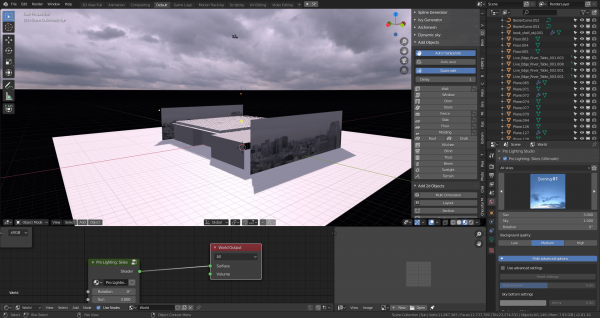

One key change in LuxCoreRender is the new PhotonGI Cache for caching global illumination.ĭescribed as a “V-Ray-like solution”, but based on photon mapping rather than the approach taken in V-Ray’s Light Cache GI engine, it is intended to provide a fast, accurate approximation of brute force GI. New in 2.2: PhotonGI Cache system for faster global illumination The 2.0 release also reduced the number of DCC tools into which the renderer is integrated: whereas LuxRender used to have plugins for a range of apps, LuxCoreRender only supports Blender. It’s a physically based render engine with a range of production features and, as of LuxCoreRender 2.0, supports hybrid C++/OpenCL rendering on CPUs and GPUs. The LuxCoreRender team has released version 2.2 of the open-source physically based renderer, adding a new GI cache system and a Disney BRDF material, and integrating Open Image Denoise.īlendLuxCore, the Blender integration plugin for the renderer, now supports Blender 2.80, and work has begun on supporting all of the materials, lights and camera settings from Blender’s Cycles renderer.Ī hybrid CPU/GPU unbiased render engine, formerly known as LuxRenderįormerly known as LuxRender, LuxCoreRender was rebooted last summer with a change of name, a new project website, forum and online documentation.

Luxcorerender blender 2.9 update#
The update makes the open-source renderer compatible with Blender 2.80. An image rendered using a pre-release build of LuxCoreRender 2.2 and the BlendLuxCore 2.2 plugin, created by ArchVizBlender.


 0 kommentar(er)
0 kommentar(er)
